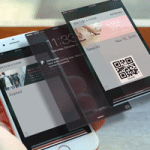 Mobile commerce has been making false starts for quite a while now. Smartphone operating systems (OS) have had the capability of promoting mobile commerce through such technologies as Google Wallet, Apple Pay and iBeacon, which have been around for years. Yet very little has been done to improve mobile commerce. I suspect that this has to do with the limitations of the smartphone and the lack of acceptable user experience (UX).
Mobile commerce has been making false starts for quite a while now. Smartphone operating systems (OS) have had the capability of promoting mobile commerce through such technologies as Google Wallet, Apple Pay and iBeacon, which have been around for years. Yet very little has been done to improve mobile commerce. I suspect that this has to do with the limitations of the smartphone and the lack of acceptable user experience (UX).
Companies like Amazon and eBay understood a long time ago that the digital commerce experience on a smartphone is very different from the shopper’s experience online. The constraint of the screen size alone makes it very difficult to present products in a manner that entices the end user to look at them. And between the way consumers use their smartphones and the limits that are placed on their interaction with the mobile device, having a great visual, let alone being able to see the offering, is elusive at best.
Even with the advent of phablets like iPhone 6 Plus, a user’s experience with the device is limited. Although phablets give a better experience to the user, the underlying OS and its features are still targeting a mobile person. All of these constraints need to be considered when developing a mobile shopping application.
Several years ago, responsive design was the highly desirable new capability in the ecommerce world. Ecommerce platform developers sought to make their platforms responsive—the idea being, to reformat any given screen automatically to fit the mobile landscape. Unfortunately, this was a technical solution to a non-technical problem—it didn’t respond to how users want to see, and shop.
Responsive design failed because the user experience wasn’t only about the constraint of the screen, but how the individual interacts with the screen. It was a step in the right direction, but was lacking in responsiveness to the user’s needs and wants—and eyesight.
I believe that mobile devices have a definite role to play in digital commerce. In my view, mobile commerce is not a replication of desktop apps; instead, it is complementary technology to the larger digital commerce experience.
Mobile devices have some built-in technologies that digital commerce implementers should factor into their overall digital strategy. Core technologies such as GPS, LE Bluetooth, SMS and Wifi can be leveraged to build apps that enhance the mobile shopping experience. For example, using Bluetooth enables communication with other Bluetooth devices, such as beacon.
With beacon, you can use the customer’s own smartphone as a way to assist her in a shopping environment. Beacon allows you to know, within three feet of the beacon, where your customer is. In a controlled environment you can use beacon for promotions, information or broadcast messaging, bringing the digital experience right into the aisle.
Shoppers can also use their mobile device as a way to electronically cart their items in the store. This can be especially useful for appliances and other large items. Everything from product selection to checkout can be done from the phone.
The customer can even arrange shipping, using the in-store item as a display. During the shopping experience, the shopper can use the mobile device to pass information and specifications about the item he is interested in. Recently I was shopping for an air compressor at Home Depot. There were four models from which to choose, but the information on the tags provided very little data on which to base my purchasing decision—the differences between them seemed to come down to brand and color.
I went home, looked up the specifications on the units, and ended up ordering online. I would have been more than happy to pay a little more in the store to have the experience of instant gratification. Instead, the retailer was not able to satisfy my informational need, there was insufficient mobile support, and I had to wait until I was able to look it up online.
This is one sort of capability that a shopper-friendly smartphone should be able to give the customer. And another way a physical retailer can replicate the online experience – just think how easily you can compare product information and reviews of similar items when shopping on Amazon.
Online-only retailers such as Amazon and eBay have taken a different route. Their mobile apps have limited functionality. They target you with only the information that they believe is individually important to you. Their algorithms try to predict the products you might be interested in, and present that limited selection to you in a small screen format. They are not trying to replicate the entire shopping experience that you would have online—instead they send a subset of what you might be interested in within the constraints of the mobile device.
What these examples lead me to is the thought that mobile commerce has great potential, but still has a long way to come before it can be fully realized as a great shopping tool. Customer preference data can be combined with beaconing technology and a smarter approach to mobile shopping app design to create a seamless, truly omnichannel—mobile to brick-and-mortar to online, and back around again—experience for the user. To be smart and evolutionary, mobile commerce apps need to start—and end—with UX.
Sam Cinquegrani is Founder and CEO of ObjectWave Corp., a full-service provider of digital commerce solutions. He can be reached at samc@objectwave.com.